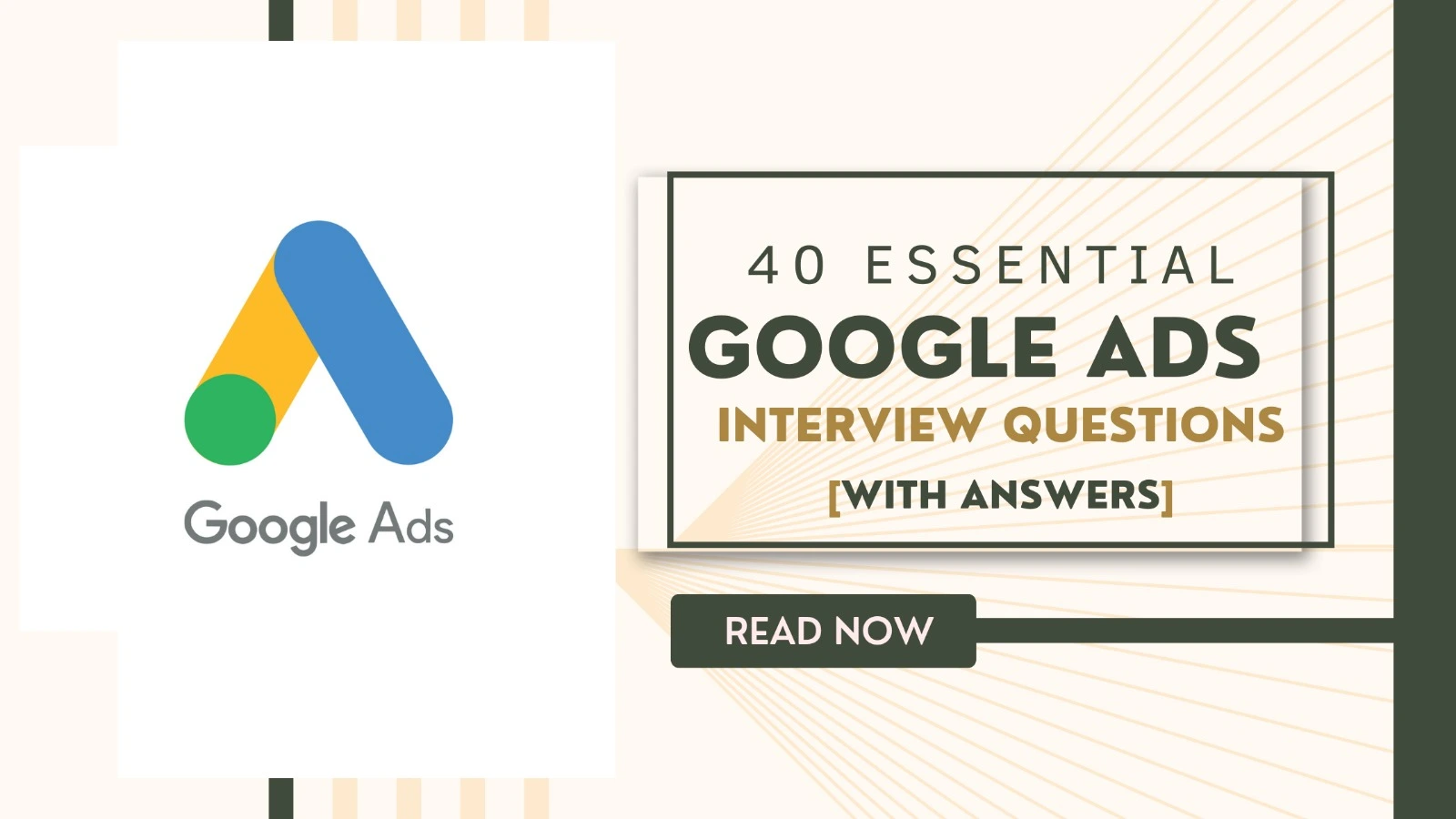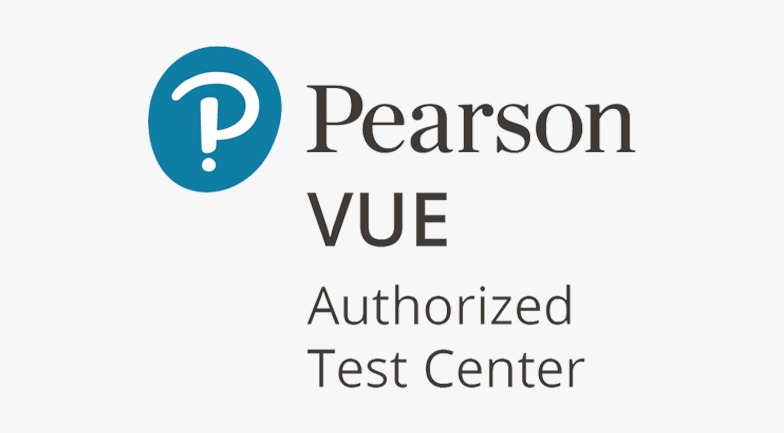Table of Contents
Toggle40 Essential Google Ads Interview Questions for Aspiring Digital Marketers
Google Ads is a crucial tool for any digital marketer, making it a common topic in interviews for those pursuing careers in the field. To help you prepare, we’ve compiled a list of 40 essential Google Ads interview questions with answers, ranging from basic to advanced levels. Whether you’re a beginner or a seasoned professional, these questions will help you understand what to expect in your next interview. If you’re looking to enhance your knowledge in this area, consider joining a reputable digital marketing institute to refine your skills.
1. What is Google Ads?
Google Ads is an online advertising platform developed by Google where advertisers can bid to display brief advertisements, service offerings, product listings, or videos to web users.
2. How does Google Ads work?
Google Ads operates on a pay-per-click (PPC) model, where advertisers bid on keywords, and their ads are shown to users who search for those keywords. Advertisers are charged each time someone clicks on their ad.
3. What are the different types of Google Ads campaigns?
The main types of campaigns include Search, Display, Shopping, Video, and App campaigns.
4. Explain the structure of a Google Ads account.
A Google Ads account is structured into three layers: Account, Campaign, and Ad Group. The account is linked to a unique email address, the campaign is where you set your budget and targeting options, and the ad group contains your ads and keywords.
5. What is the difference between a Search Network and a Display Network?
The Search Network allows ads to appear on Google’s search engine results pages, while the Display Network lets ads be shown on a collection of Google-affiliated websites, YouTube, and apps.
6. What is the Quality Score in Google Ads?
Quality Score is a metric that Google uses to determine the relevance and quality of your ads, keywords, and landing pages. A higher Quality Score can lead to lower costs and better ad positions.
7. How can you improve Quality Score?
To improve Quality Score, focus on creating relevant ads, choosing appropriate keywords, and optimizing your landing pages for a better user experience.
8. What is Ad Rank?
Ad Rank is the position your ad holds on the search engine results page (SERP) based on your bid, Quality Score, and other factors like the expected impact of ad extensions.
9. Explain the importance of keyword match types.
Keyword match types allow you to control how closely the keyword must match a user’s search query for your ad to appear. The types include Broad Match, Phrase Match, Exact Match, and Negative Match.
10. What is a Negative Keyword?
A Negative Keyword is a type of keyword that prevents your ads from showing for certain search queries, helping to filter out irrelevant traffic and reduce wasted ad spend.
Also Read 40 Essential SEO interview Questions and Answers
11. What is a bidding strategy in Google Ads?
A bidding strategy determines how you pay for users to interact with your ads. Strategies include Manual CPC, Maximize Clicks, Target CPA, Target ROAS, and Enhanced CPC.
12. What is the difference between Manual CPC and Automated Bidding?
Manual CPC allows you to set your maximum cost-per-click for your ads, giving you more control over your bids. Automated bidding uses Google’s algorithms to optimize bids automatically based on your goals.
13. What are Ad Extensions?
Ad Extensions are additional pieces of information you can include in your ads, such as phone numbers, site links, or locations, to make your ad more informative and clickable.
14. Explain the role of a landing page in Google Ads.
A landing page is where users arrive after clicking on your ad. It plays a crucial role in converting visitors into customers and can significantly impact your Quality Score and ad performance.
15. What is CTR and why is it important?
CTR, or Click-Through Rate, is the ratio of users who click on your ad to the number of times it is shown. A high CTR indicates that your ad is relevant to the users viewing it.
16. What is Conversion Rate?
Conversion Rate is the percentage of users who complete a desired action (like making a purchase) after clicking on your ad. It’s a key metric for measuring the success of your campaign.
17. How do you track conversions in Google Ads?
Conversions can be tracked by setting up conversion tracking, which involves adding a snippet of code to your website that records user actions after they click on your ad.
18. What is Remarketing in Google Ads?
Remarketing allows you to target users who have previously visited your website with tailored ads, encouraging them to return and complete a purchase or other desired actions.
19. Explain the concept of Cost-Per-Click (CPC).
CPC is the amount you pay each time a user clicks on your ad. It’s a common pricing model in Google Ads.
20. What is Cost-Per-Acquisition (CPA)?
CPA is the cost of acquiring a customer or lead. It’s calculated by dividing the total cost of conversions by the number of conversions.
21. How do you calculate ROI in Google Ads?
ROI, or Return on Investment, is calculated by dividing the revenue generated from your ads by the total cost of the ads. A positive ROI indicates profitability.
22. What is a Call-Only Campaign?
A Call-Only Campaign is designed to encourage users to call your business directly from their mobile devices, with ads tailored to drive phone calls.
23. What are Shopping Ads?
Shopping Ads display product images, titles, prices, and other details directly in Google’s search results, driving more qualified leads to your website.
24. How does Google Ads auction work?
The Google Ads auction determines which ads will appear and in what order. It considers the advertiser’s bid, Quality Score, and the expected impact of ad extensions.
25. What is a Dynamic Search Ad?
Dynamic Search Ads automatically generate headlines and landing pages based on the content of your website, helping you reach customers searching for your products.
26. What is the role of the Display Planner?
Display Planner is a tool within Google Ads that helps you find new targeting ideas, estimate the reach and cost of your campaigns, and plan your display campaigns more effectively.
27. Explain the concept of Ad Scheduling.
Ad Scheduling allows you to choose specific days and times when your ads will appear, helping you optimize your ad spend based on when your target audience is most active.
28. What is the difference between a Google Ads Campaign and an Ad Group?
A Campaign is a set of ad groups that share a budget, location targeting, and other settings. An Ad Group is a subset of a campaign and contains a set of similar ads and keywords.
29. What are Responsive Search Ads?
Responsive Search Ads allow you to enter multiple headlines and descriptions, and Google automatically tests different combinations to find the best-performing ad.
30. How do you optimize a Google Ads campaign?
Campaign optimization involves regularly reviewing performance metrics, adjusting bids, refining keywords, improving ad copy, and enhancing landing pages to achieve better results.
31. What is the Google Ads Editor?
Google Ads Editor is a downloadable application that allows you to manage and make bulk changes to your Google Ads campaigns offline before uploading them.
32. What is Target Impression Share?
Target Impression Share is a bidding strategy that aims to show your ad a certain percentage of times compared to the total available impressions.
33. How do you measure the success of a Google Ads campaign?
Success can be measured by analyzing metrics such as ROI, CTR, Conversion Rate, and overall campaign performance against your set goals.
34. What is a Click-Through Rate (CTR)?
CTR is a metric that indicates how often people click on your ad after seeing it. A higher CTR generally means that your ad is relevant and engaging to users.
35. What is a Google Ads Remarketing List?
A Google Ads Remarketing List is a collection of users who have previously interacted with your website or app. You can target these users with tailored ads, encouraging them to return and complete a desired action, such as making a purchase.
36. What is a Callout Extension?
A Callout Extension is a type of ad extension that allows you to include additional text in your ad, highlighting specific features or offers.
37. What is the importance of A/B testing in Google Ads?
A/B testing involves comparing two versions of an ad to see which performs better, helping you optimize your ad copy, landing pages, and overall campaign strategy.
38. What is Enhanced CPC?
Enhanced CPC is a bidding strategy that automatically adjusts your manual bids to maximize conversions while keeping your average CPC below the maximum limit set.
39. What are the benefits of using Google Analytics with Google Ads?
Google Analytics provides deeper insights into user behavior, allowing you to optimize your campaigns based on how users interact with your website after clicking on your ads.
40. What is the importance of ad copy in Google Ads?
Ad copy is crucial as it directly impacts the effectiveness of your ads. Well-crafted ad copy can lead to higher CTRs, better Quality Scores, and improved overall campaign performance.
Conclusion
These 40 essential Google Ads interview questions will help you prepare for your next interview and demonstrate your knowledge of the platform









